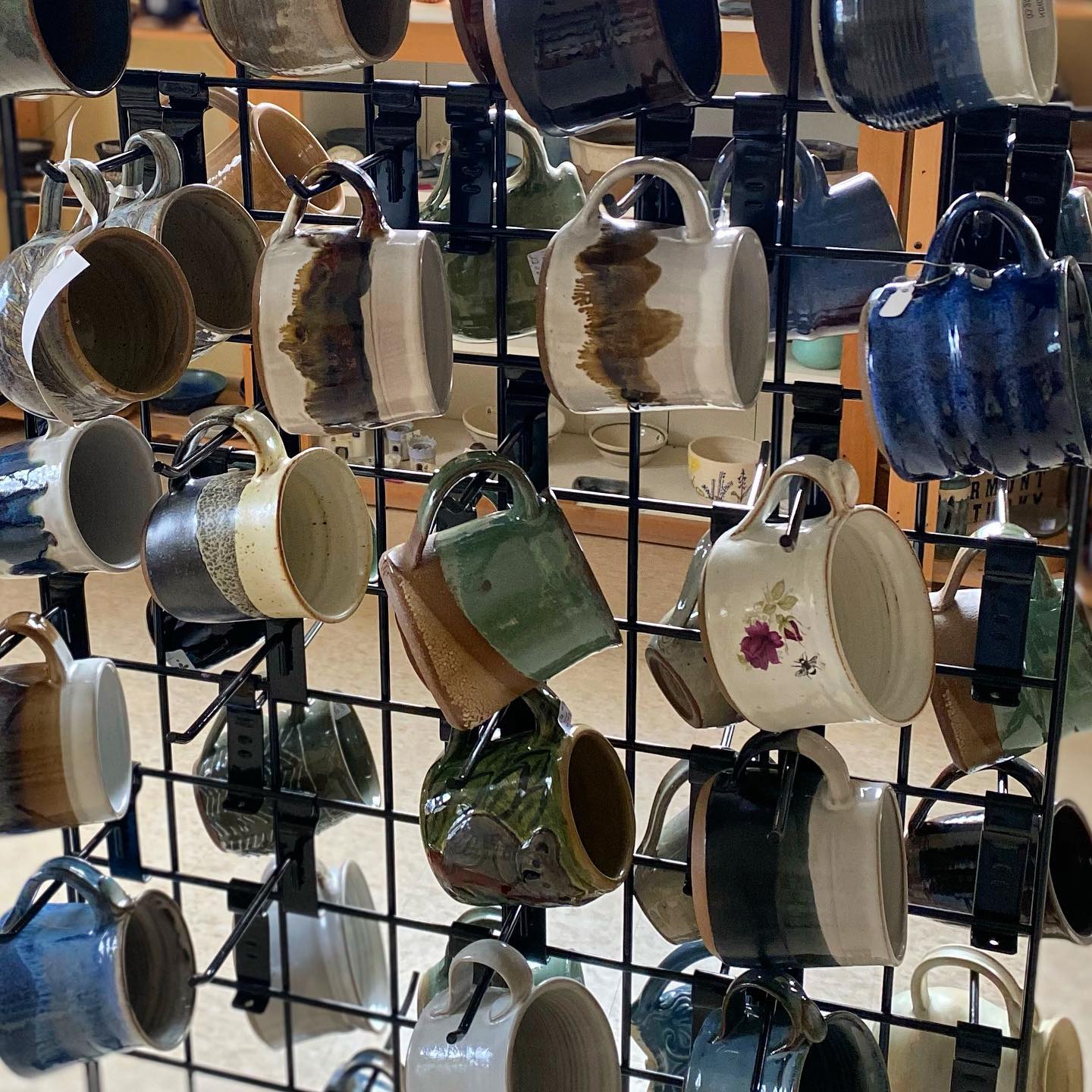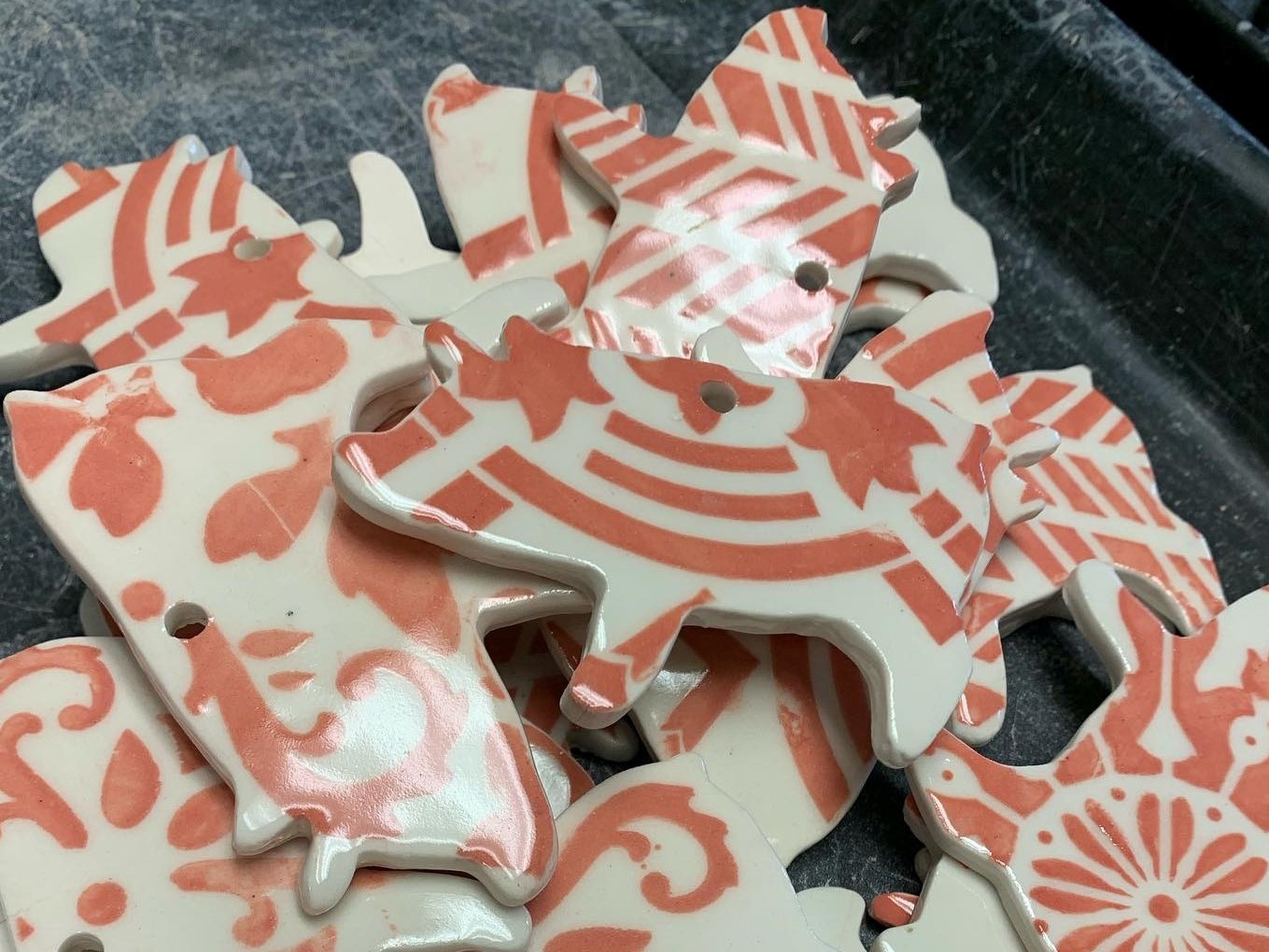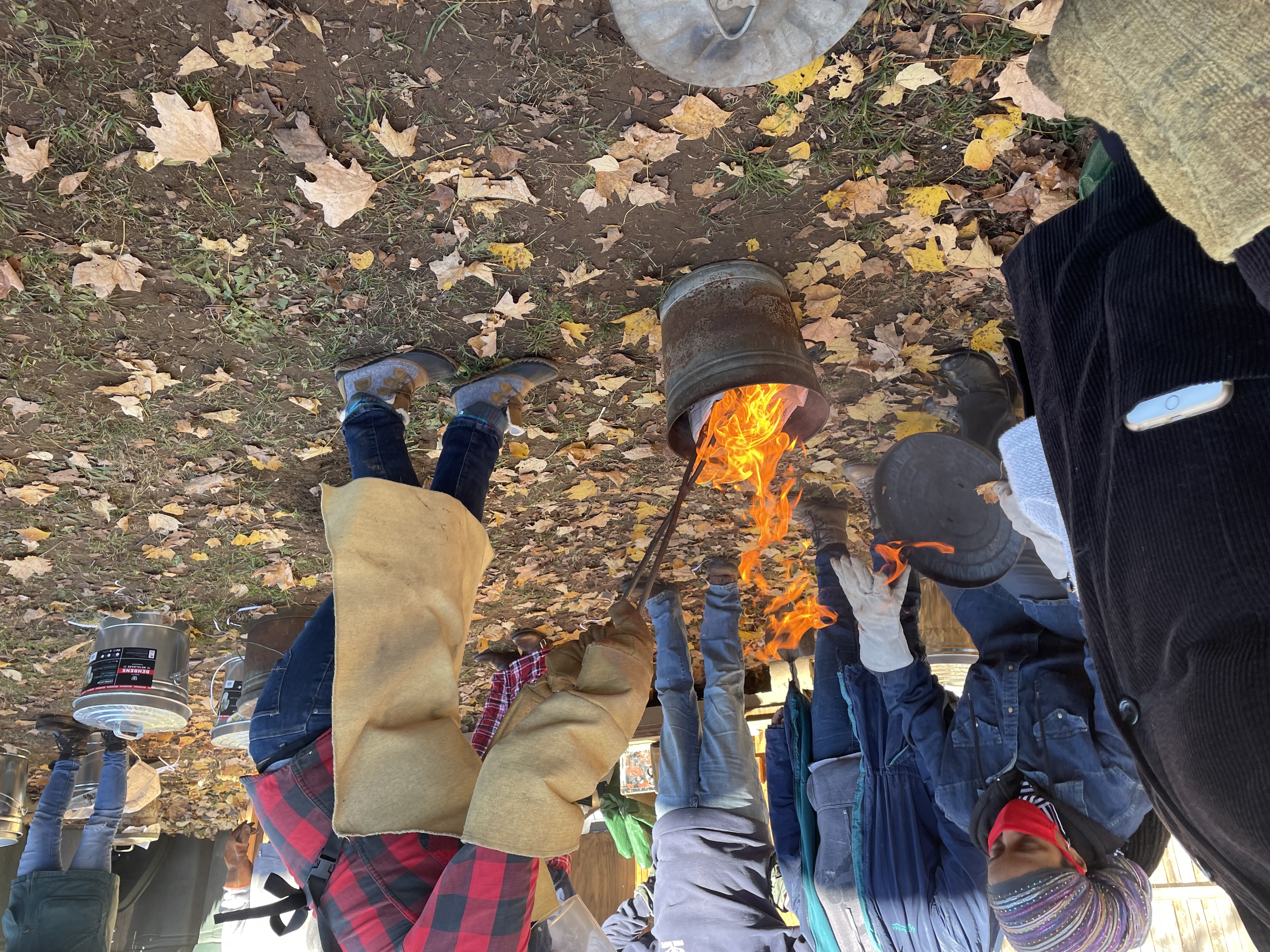Raku
Raku is a pottery firing technique dating back to 16th century Japan. Modern raku is loosely based on the ancient Japanese technique. When the glazed ware reaches the temperature of approximately 1800 degrees, it is placed in a pit containing combustible materials [for example, paper, pine, and sawdust]. The red-hot piece ignites the combustibles and the pit is then tightly covered to reduce the oxygen and stop the fire. Pots produced using the raku method are porous and fragile and are considered nonfunctional, decorative pieces. They do not hold water and should not be used for food or beverage.
Horsehair Raku pottery is coated several times with a very fine clay slip called terra sigillata and burnished. Pieces are then fired in the traditional manner of 16th Century Japanese Raku, removed from the kiln while hot, and horsehair is applied to the surface. The burning of the hair as it comes in contact with the piece creates dramatic unpredictable black carbon lines and smoke patterns. The pieces are cleaned and waxed to a satin finish. These pots are porous and fragile and are considered nonfunctional, decorative pieces. They do not hold water and should not be used for food or beverage.


